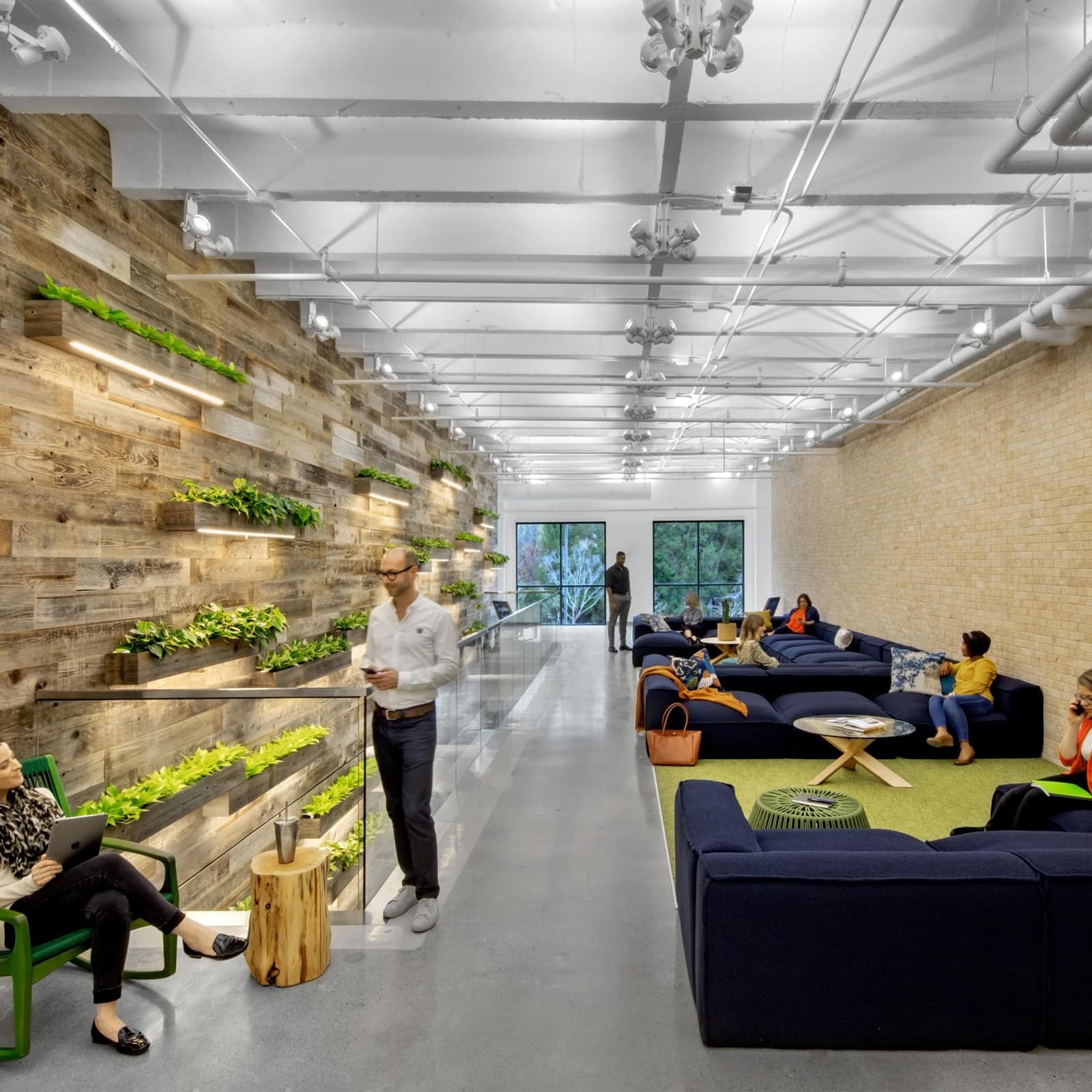The question posed for this blog post is, “How might the current COVID crisis impact design for the better?” But, because I have infinite belief in the power of design to create positive change, I prefer to turn the question around and ask, “How might design impact the current crisis for the better?”
Since the world stayed home, there has been a proliferation of thoughtful industry dialog and brainstorming about what comes next for the office environment. What will the workplace look like in the post-COVID-19 world? How will it need to function in order to be successful in the “new normal?” What are the big ideas that will help us get back to business as close-to-usual as possible? The commercial real estate and design communities, industry associations, and manufacturing and services sectors are all engaged in the conversation.
As theories abound around de-densification and staggered work schedules, phased or permanent work from home policies, furniture and materials solutions, and new building systems and maintenance protocols (to name just a few), what it all really boils down to is a comment that I heard recently on a webinar, by Dr. Whitney Austin Gray, Senior Vice President at the International WELL Building Institute. Dr. Gray has advocated for the idea that the built environment can be the first line of defense for public health initiatives, since long before the current pandemic threw us into chaos.
What it really boils down, according to Dr. Gray, is, “Do you trust your building?”
Physical well-being has been a basic tenet of good workplace design for some time now. Many organizations understand the need for investment in proper ergonomics (witness the rise of the now-ubiquitous height-adjustable work surface), activity-based planning that permits choice and encourages employees to incorporate movement into their work day, and healthy indoor air quality and food service amenities.
What owner/occupiers have been less able to wrap their budgetary limitations around is psychological well-being...the idea that a happy employee is a more engaged and productive employee—with a very real but also hard-to-quantify positive impact on the bottom line. Despite well-established metrics demonstrating that the average organization allocates up to 85% of its operating budget to the costs associated with its human resources, many still value-engineer out of their workplace environments design elements meant to promote a higher level of employee satisfaction, innovation, creativity, comfort and emotional well-being.
Enter COVID-19, where the financial metrics of cost/sq.ft. and sq.ft./employee that typically guide real estate decisions will be trumped by the measure of TRUST employees have in their workplaces—a new and decidedly human-centric metric. With everyone now knowing full well that work from home works just fine, many employees—especially prized knowledge workers—will feel justifiably free to choose when they feel comfortable returning to the office, when they trust that they will be working in a safe environment. Many will even choose new employers if their current organizations don’t value them by meeting their level of expectations around safety.
Getting to a point where we trust our buildings will require a heightened level of empathy and attention to psychological well-being, applied to a comprehensive solution incorporating “all of the above” (de-densification, staggered work schedules, new products and materials…etc.), and then some. Design firms, which have always placed an emphasis on the psychological impacts of space, are already flooded with calls from clients seeking guidance on these issues, and many have already formulated compelling responses (see images of examples). Designers will play an essential role in the speed and quality of the recovery from the pandemic, by helping their clients create spaces that are safe but also still inspiring and affirming to occupy.
There is also an opportunity now to balance the financial drivers of corporate real estate strategy with more human-centric metrics that consider an alternative path (employee happiness and all the good things that come with it) to achieving business goals. If thoughtful design solutions focused on well-being can help establish all important trust among returning employees, this would definitely impact the perceived value of design for the better.
Above: A successful return to the workplace post-COVID-19 will largely be a matter of trust. A&D firms like HOK, Perkins and Will, and Gensler are taking the lead on addressing clients’ immediate and long term needs with comprehensive guidelines that include human-centric design strategies to build trust in an employer’s commitment to health, wellness and community. Photo Credit: Pharmavite, designed by HOK Los Angeles, photographed by Eric Laignel.

